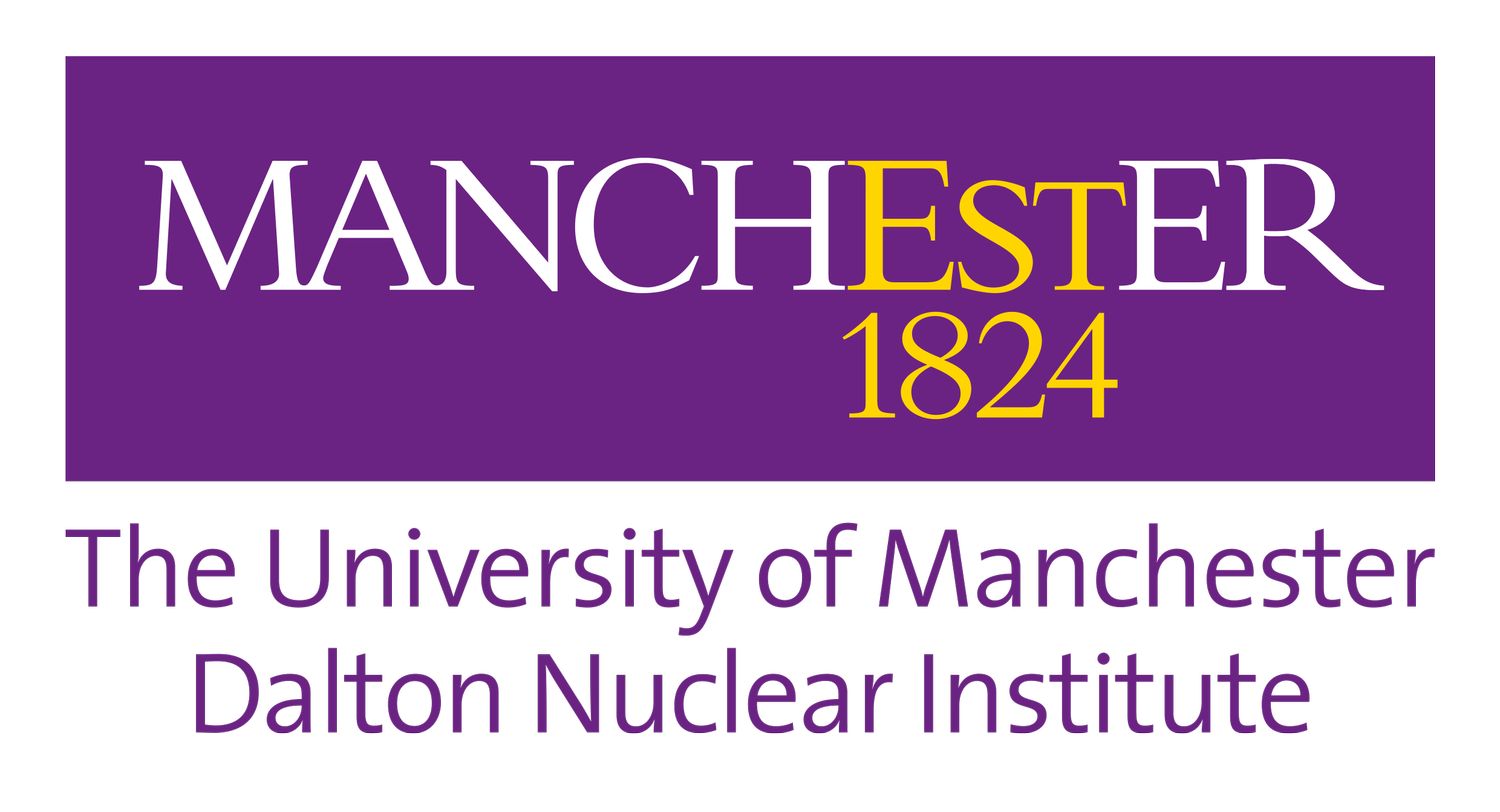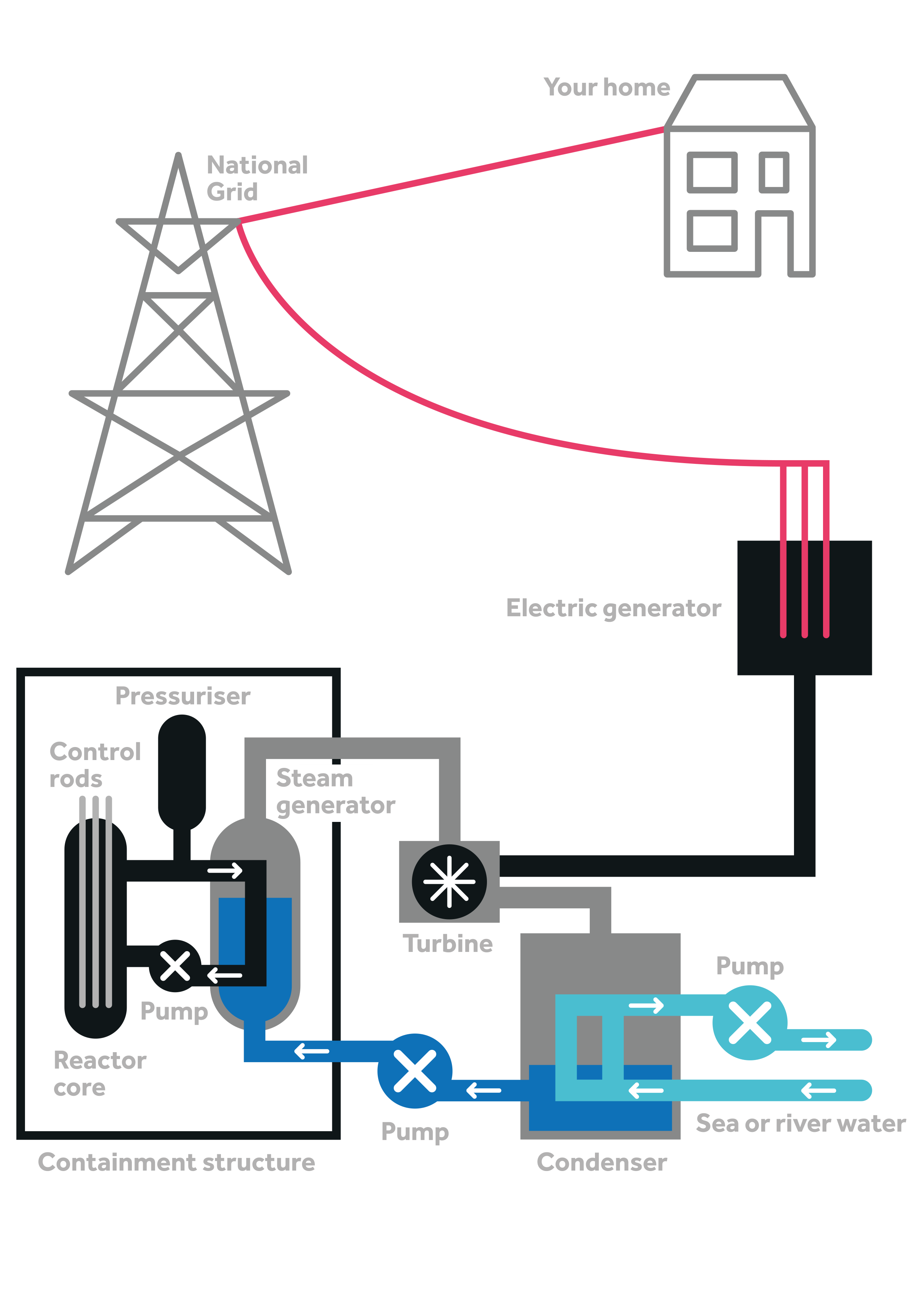7 FACTS TO
START THE CONVERSATION...
WHAT IS
NUCLEAR
FISSION?
Nuclear fission takes place when a neutron collides with the nucleus of a uranium atom causing it to split. This gives out a burst of energy and releases more neutrons.
A chain reaction is then set in motion as more atoms are split by these neutrons; releasing more energy and more neutrons.
Nuclear power stations are engineered to control this chain reaction and safely regulate the amount of energy produced.
hOW DOES A
NUCLEAR REACTOR
WORK?
The energy released from nuclear fission in the reactor core is used to heat water to create steam under high pressure.
This steam is harnessed to drive turbines making them spin very quickly, at around 25 rotations per second.
An electric generator converts this kinetic energy into electricity, which is then transported to your home through the National Grid.
Sea or river water is used to cool the steam, condensing it back into water. The water is re-used in this cycle time and time again.
UP FOR A BIG CHALLENGE?
How about keeping a nuclear reactor running night and day?
Try your hand at our Nuclear Reactor Simulator
WASTE AND DECOMMISSIONING
Using nuclear fission to generate electricity also produces nuclear waste. This includes spent fuel, fuel cladding and even tools and clothing that have become radioactive.
However, the quantities of waste produced are tiny compared to the amounts of carbon dioxide released from burning fossil fuels. More than half a century after nuclear fission was first used to generate electricity in the UK all of the high-level waste produced could fit into a single Olympic-sized swimming pool.
Today, nuclear waste is stored at special above-ground facilities, but there are plans to build a geological disposal facility in the UK,
which one day will safely isolate and store this waste deep underground, between 200m and 1000m deep.
READY TO TEST YOUR KNOWLEDGE?
Take part in our brain challenge. Earn points as you prove you know your stuff
RADIATION AND HEALTH
Radiation is energy travelling through space and it is all around us, coming from both natural and artificial sources. While radiation
has many practical uses, for example in medicine, certain types can cause damage to matter. Ionising radiation, as it is known, can
produce charged particles called ions, which can affect us and the things around us.
Some radiation is emitted naturally by uranium but the process of nuclear fission produces much more. For this reason, great care is taken in planning and developing nuclear facilities and their operating procedures to protect workers.
Let's Talk About
Nuclear Energy
With the need for a low carbon and dependable flow of electrical energy every day, the UK nuclear industry has a vital role to play in our future. Over the past 10 years, the University of Manchester's Dalton Nuclear Institute has established the most advanced academic nuclear research capability in the UK and is also a leading centre for higher learning.
Our community outreach activities help to inform the wider public about nuclear energy technology and the role nuclear power plays as part of a low carbon future. We attend public events across the UK and place significant emphasis on visiting and welcoming schools, with our researchers and experts giving talks and running workshops which present the whole scope of nuclear issues.
Join the conversation, take part in our activities and find out more.
Email us dalton@manchester.ac.uk
Tweet us @DaltonNuclear
#TalkNuclearUoM






